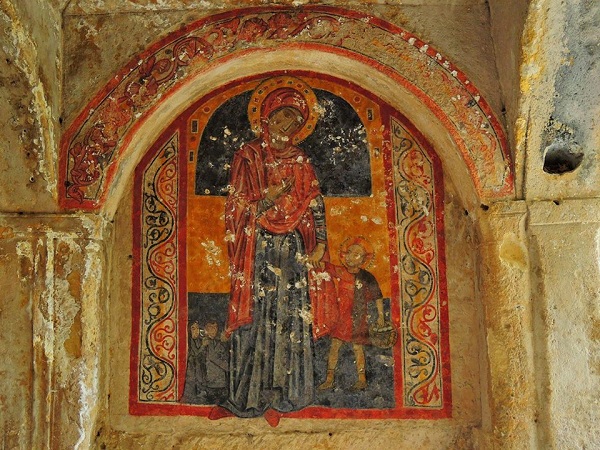
Motola, caves
Ravines, lame[1], gorges, caves, crypts, and churches with frescoed rocky walls are the natural and artistic heritage protected in the Parco Regionale delle Gravine dell’Arco Ionico.
People have long thought that the caves of these ravines had been used during the Middle Ages only by hermits or Eastern monks who came to Puglia after the 8th-century iconoclastic controversy. Actually, authoritative experts in various disciplines, from Geology to History, in particular starting from the hypotheses formulated by the historian Cosimo Damiano Fonseca, have shown that the rock churches or the so-called hermit crypts represented only one of the possible forms of living in a cave. Between the 10th and the 15th century, dwellings and entire hamlets were excavated from the sides of lame and ravines by local people who chose life in caves as a conscious alternative to urban life. Hence, the expression “rock civilization” was coined to define that singular way of life, which is different from but not inferior to life in towns and villages. In Puglia the habit to excavate from the soft limestone dates back to the Bronze Age, which many tombs found by the archaeologists belong to. Also during the classical period underground areas were still in use, showing that the attitude of living in a cave was deeply rooted in local people already before the birth of Christianity. Puglia boasts a very rich rupestrian heritage: Massafra’s churches are one of the best chapters of this fascinating story in the rock.
In particular, the Church of Candelora and the rupestrian complex attached to the Sanctuary of Madonna della Scala are worth noting.
The Church of Candelora looks onto the ravine of San Marco and is located within a private garden that may be reached following Via Canali. The Crypt has a basilica plan with three naves and, although collapse damaged the original entrance and part of the apse area, it keeps the false slopes and domes. The walls, along which various arches open, house very beautiful frescoes that date back to the 13th and 14th centuries. These paintings have both Greek and Latin inscriptions, showing the cultural variety of the region, which is a bridge between the Greek and Byzantine East and the Latin West. The fresco Vergine che conduce il Bambino is particularly evocative. Its iconography is very rare and seems to highlight the motherly tenderness of Maria, nearly walking outside the sacred space of the painting – her feet, before the floor lowered, touched the walking surface. She seems to give caring recommendations to her child, who brings an egg basket, interpreted in various ways. In Christian symbolism, the egg may refer to the Passion, as a metaphor of a sepulcher that creates life. The two smaller figures next to the Virgin represent the couple who commissioned the fresco.

Crypt of Candelora, the fresco Vergine che conduce il Bambino
Also the Sanctuary of Santa Maria della Scala, with its crypt, is worth visiting. Located on the outskirts of Massafra, along a deep and picturesque ravine, it can be reached through a spectacular Baroque style staircase.
Legend has it that in the place where the sanctuary lies today, two does were found venerating a Marian icon. The present shrine was built in the 18th century on the original crypt, frequented since ancient times. The building, which today has the 18th-century style and shape, houses a valuable 13th-century fresco, which depicts a beautiful Madonna con Bambino.

Sanctuary of Madonna della Scala, Madonna con Bambino
-
T. N.: Depressions in the ground with gentle slopes, due to the karst processes in Puglia. ↑
